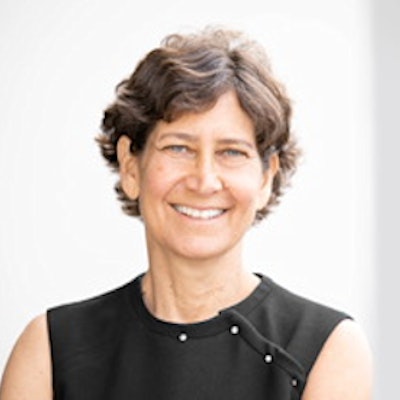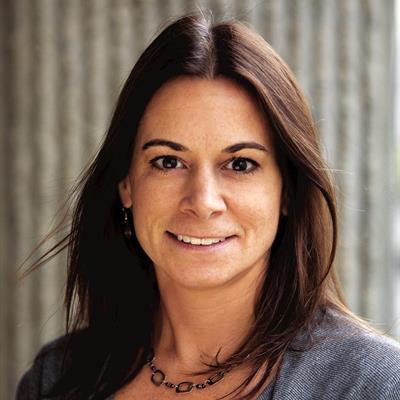
Medical imaging utilization continues to rise -- especially for advanced imaging exams such as CT and MRI -- despite efforts to curb its growth, according to a study published online September 3 in the Journal of the American Medical Association.
Although imaging utilization slowed in the early 2000s, it has picked back up in recent years across most patient age groups, with the exception of a decline in pediatric CT, noted the researchers from the University of California, Davis (UCD); the University of California, San Francisco (UCSF); and Kaiser Permanente Northern California.
 Dr. Rebecca Smith-Bindman of UCSF.
Dr. Rebecca Smith-Bindman of UCSF.The study results suggest that much more work needs to be done to contain imaging use rates and determine whether the imaging that is used is appropriate, said lead author Dr. Rebecca Smith-Bindman of UCSF in a statement released by the university.
"Medical imaging is an important part of healthcare and contributes to accurate disease diagnosis and treatment, but it also can lead to patient harms such as incidental findings, overdiagnosis, anxiety, and radiation exposure that is associated with an increased risk of cancer," she stated. "Like all aspects of medicine, it's important to make sure imaging is justified and that the potential benefits are balanced against the potential harms."
More use, less need?
Use of CT, MRI, and ultrasound in the U.S. rapidly increased between 2000 and 2006, due in part to "technical improvements, physician and patient demand, and financial incentives," the group wrote. But it's unclear whether this growth in medical imaging use actually benefits patients.
"It has been estimated that 30% or more of imaging examinations may be unnecessary, costing approximately $30 billion annually in the United States," Smith-Bindman and colleagues wrote. "Potential overuse of diagnostic testing has been addressed by the American Board of Internal Medicine Foundation's Choosing Wisely campaign and by initiatives by payors to reduce imaging through payment reductions ... [but] costs may not accurately reflect utilization or potential harms associated with imaging."
 Diana Miglioretti, PhD, of UCD.
Diana Miglioretti, PhD, of UCD.For this study, the researchers -- led by Smith-Bindman and senior author Diana Miglioretti, PhD, of UCD -- assessed patterns of medical imaging between 2000 and 2016 among a group of 16 million to 21 million patients enrolled in seven U.S. healthcare systems and the publicly funded system in Ontario, Canada. The team tracked use of CT, MRI, ultrasound, and nuclear medicine exams, assessing annual and relative imaging rates by modality, country, and age. The study included 135.8 million imaging exams, 4% of which were of children (patients younger than 18), 66% in adults (ages 18 to 64), and 30% in older adults (65 and older).
Across all age groups, imaging rates were significantly higher in 2016 compared with 2000 for all imaging modalities other than nuclear medicine, the group found.
| Imaging rates across all age groups in the U.S. and Ontario, 2000 and 2016, by modality | ||||
| Imaging use by location and year (per 1,000 person years) | ||||
| Ontario | U.S. | |||
| Modality | 2000 | 2016 | 2000 | 2016 |
| CT | 52 | 135 | 56 | 141 |
| MRI | 10 | 60 | 16 | 64 |
| Ultrasound | 188 | 386 | 177 | 347 |
| Nuclear medicine | 33 | 25 | 28 | 22 |
The researchers also found the following:
- Nuclear medicine exams decreased across all age groups and in both locations between 2000 and 2016.
- Imaging rates were higher in 2016 than in 2000 in adults and older adults in CT, MRI, and ultrasound in both the U.S. and Ontario.
- Imaging rates for CT among adults and older adults increased most rapidly in the early 2000s.
- Annual imaging rates in children were higher in 2016 than in 2000 for CT, MRI, and ultrasound, with the exception of CT imaging in Ontario, which was lower in 2016 than in 2000.
The study findings may reflect growing awareness of the need to avoid unnecessary imaging, the team concluded.
"Public health concerns about radiation exposure from medical imaging have intensified with publicity regarding the rapid increase in imaging utilization," the researchers wrote. "In adults, CT use continued to rise, albeit more slowly than seen previously. The decline of CT in children and greater increase in MRI may reflect greater awareness of the concern regarding radiation exposure and harm in children. The less frequent CT use in adults in Ontario may reflect greater awareness of issues of ionizing radiation exposure in adults."
Actionable?
The study findings are thought-provoking, but it's unclear whether they can be implemented yet in a way that will improve patient care, wrote Dr. Deborah Levine, of Beth Israel Deaconess Medical Center in Boston, and Dr. Richard Duszak Jr., of Emory School of Medicine in Atlanta, in an accompanying editorial.
"Without information about discrete episodes of care, [the study findings] are not immediately actionable," they wrote. "Without knowing who ordered this imaging ... for what indications ... and in what settings ... more work will be necessary to translate this information into improved patient outcomes."
This work may need to include increased radiologist interaction with referring physicians, Smith-Bindman told AuntMinnie.com.
"Radiologists have a real opportunity to work with their referring providers to help guide them in how and when to image, and when not to image," she stated. "We need to figure out ways to make ourselves available for consultation. Doing this would have a real impact on testing utilization."




















